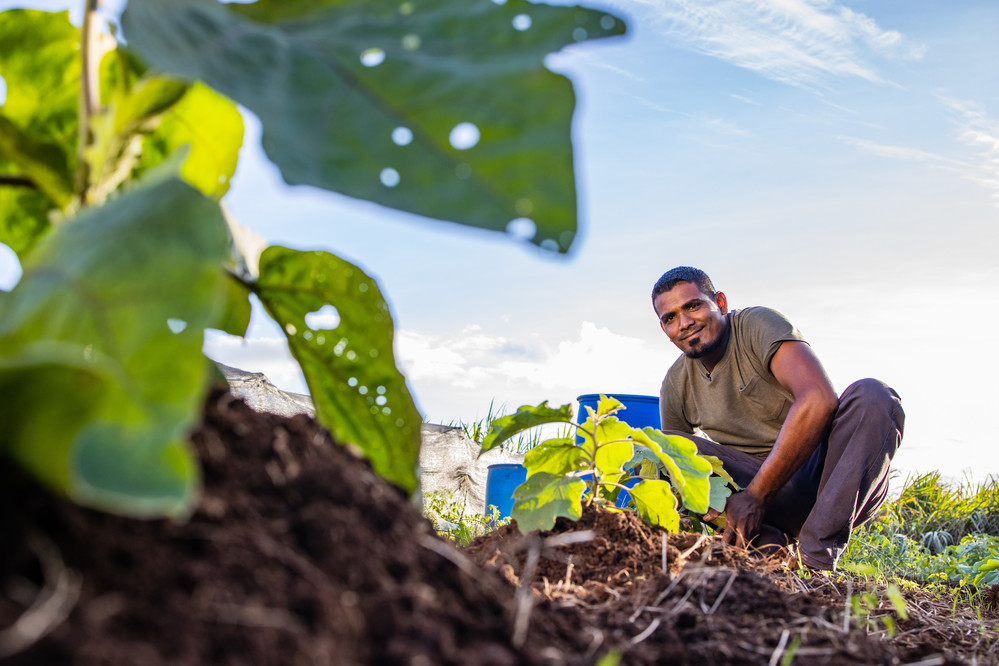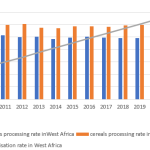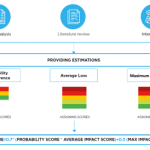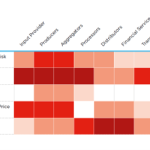The stakes of value chain risk assessment
In spite of an increasing urban demand for food and processed food in Africa, private investments in agriculture and agribusiness remain low in average. The increasing demand does not appear to stimulate value chain growth as much as it could. One of the reasons is that investing in agriculture and food processing is risky. The dynamic urban demand could drive local production and food processing with a greater impact if this demand could make investments profitable with a greater degree of certainty. Figure 1 illustrates that the rate of cereal processing in West Africa is far from being low (50% of available food is processed), while the world average is 60%, but is made of a large amount of small scale transformation units with little value added. This is a way to limit financial risks for processors and banks, but it also limits profits from scale economies and impedes the ripple effect of the downstream activities on the production. The processing rate is the quantity of cereals used in food processing divided by the amount of cereals available for food).
- Fig 1. Cereals processing rates and urbanisation rate. Source: FAOSTAT, 2023
To stimulate production in Africa, it is crucial to decrease risk for producers but also to improve the connexion between producers and large urban markets, which means stimulate investment in processing and distribution, which means decrease risk for processors, distributors, financial service providers.
PARM value chain risk assessment methodology
From 2014 to 2022, PARM has realised 9 national agricultural risk assessments, focused on production (Burkina Faso, Cabo Verde, Cameroon, Ethiopia, Liberia, Niger, Senegal, Uganda, Zambia). We have gained experience on the technical side of the assessment, and on the process of working with governments on risk management. We have soon realised the relevance of expanding this knowhow to the value chain.
In 2021, PARM has developed a practical toolkit to identify the main risks existing along value chains and which may hinder private investments in these value chains[1]. The key idea of PARM Value Chain Risk Assessment Study (PARM VC-RAS) is that all important risks at all stages need to be addressed altogether to avoid disconnection at any stage of the chain. Along the value chain, it may happen that an efficient risk management policy actually decreases one risk at one stage (for example at the production stage), however, if one other stage of the value chain remains risky, investors may be reluctant to invest, and the link between demand and supply will remain at local scale only, thus producers do not benefit from a potentially growing urban demand for processed food. In this case, the growing food demand may not stimulate local supply but rather imports.
This value chain approach is now being implemented in two countries (Madagascar and Tunisia), and will be implemented in Burundi in the coming months.
PARM methodology aims to identify the main risks in a value chain, their frequency and impact, how actors deal with it and what could be done to mitigate these risks, or to adapt to these risks in a way to consolidate the whole value chain.
The PARM VC-RAS has 5 phases: inception, risk assessment, vulnerability assessment, risk mapping and risk management solutions.
The inception phase mainly aims at selecting one or a few promising value chains based on statistics, literature, and policy priorities.
The risk assessment phase characterises and evaluates all existing risks in each selected value chain (risks identification, analysing, scoring). For each risk at each stage of the value chain, a rational risk scoring process is carried out, based on risk probability, damages in case of shock, and maximum impact (Figure 2). This phase requires a large amount of data series and expert knowledge (for each type of risk, at least one variable should describe the occurrence of risks, and one should describe the economic impact on actors). It is the core of the process that organises the objective and rigorous information for decision. It highlights the hotspots that make the value chain subject to risks. This risk qualification and quantification is a critical information for governments who want to make a value chain less risky for farmers but also for investors who condition their investments on risk reduction.
Then all risks at each stage are aggregated into a global score as indicated below (Figure 3).
- Fig 2. Risk scoring per risk
- Fig 3. Value chain risk mapping (values for illustration only)
The vulnerability assessment phase identifies risk management tools and evaluates their adequacy with existing risks, including a focus on women and vulnerable groups. It assesses existing capacities to manage risks, and existing caveats in this risk management, ending with a vulnerability index.
The risk mapping and prioritizing phase identifies in a concrete way the key caveats of future risk management projects and risk management policies along the selected value chains. These caveats are the targets of PARM’s future projects. The results of the risk assessment and vulnerability assessment are shared with decision takers in the public sector and the private sector in a brainstorming workshop.
And the risk management solutions phase prepares an action plan to implement these risk management projects and policies. This action plan is based on the risk prioritization and feedbacks from the governments, and draw the roadmap for implementing risk management in the value chain by the client of the risk assessment analysis. This strategy often combines public policies when a collective financing of a risk management tool is required (like civil security, price management, research, large scale irrigation…), support to private initiative like contract farming, insurance, capacity development in risk management for farmers, etc. The end result is the establishment of an economic environment around the value chain that incentives investment.
The methodology of value chain risk assessment designed by PARM is based on scientific foundations about the nature of risks, and suggests a practical pathway to turn them into feasible measurements and “decision maker friendly” features. However, the main limitation of this approach is that the quality and the availability of data are generally not equal for all risks or all stages of the value chain, thus the risk valuation is not equal for all types of risks and stages of the value chain. Sometimes, experts appreciation of the risk has to be taken into account to replace a statistical measurement of risks frequencies and impacts.
Take away message
The value added of PARM VC-RAS is to target promising value chains in their context, understand what risks may be obstacles to their expansion, provide empirical evidence of the nature of each risk, and design collectively a risk management strategy at the value chain level to mitigate these risks and foster private investments in these promising value chains.
[1] Jaffee, S.; Siegel, P.; Andrews, C. (2008). Rapid agricultural supply chain risk assessment (RapAgRisk): methodological guidelines-volume 2 (No. 70464, pp. 1-92). The World Bank.



